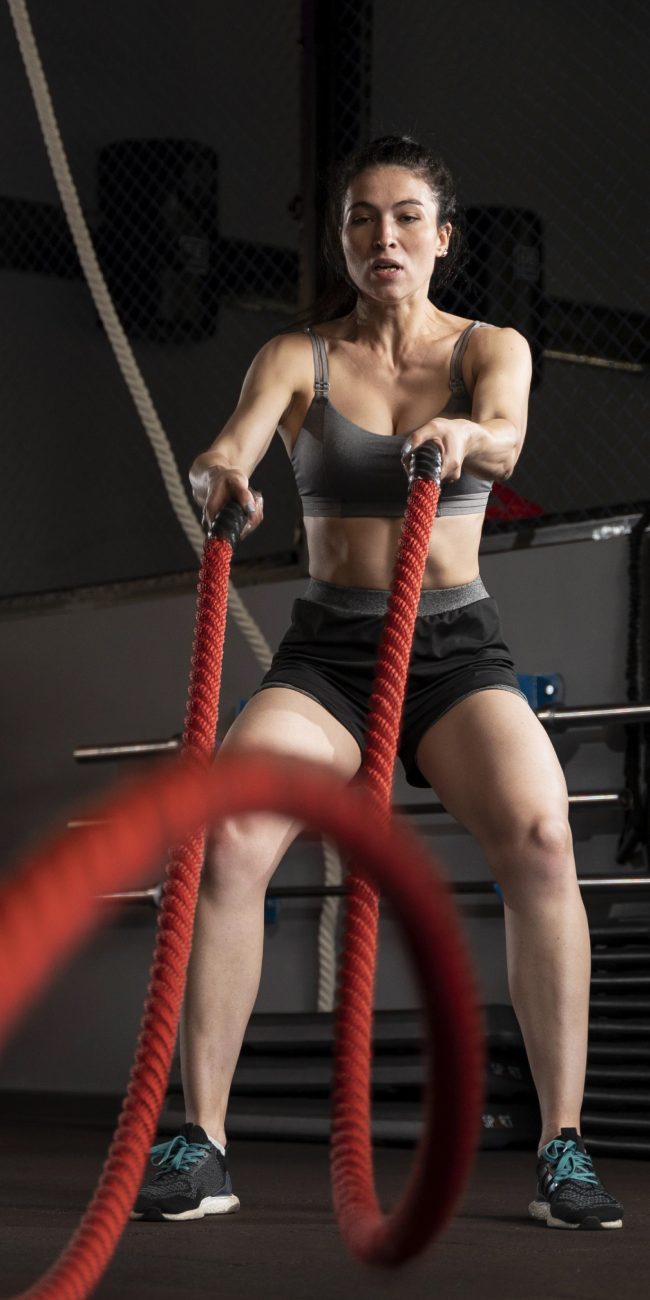
The Art of Recovery: Essential Strategies for Women’s Muscle Repair and Injury Prevention
In the world of sports and fitness, injury prevention and muscle recovery are essential pillars of peak performance—especially for female athletes. Yet, despite growing participation in competitive and recreational sports, many training and rehabilitation programs still overlook the unique needs of female athletes.
Women face distinct hormonal, anatomical, and biomechanical factors that influence their risk of injury, rate of muscle repair, and overall performance and recovery. Estrogen levels, joint laxity, pelvic structure, and muscle mass all play roles in how women experience sport injuries, muscle strain, and skeletal muscle recovery.
This guide empowers women with science-backed, actionable strategies for injury prevention, resistance training, muscle repair, and effective recovery periods—with an emphasis on education, long-term wellness, and optimizing sports performance.
Understanding Muscle Injuries in Female Athletes
Muscle Cell Function and Repair Process
Skeletal muscle tissue is designed to adapt, grow, and regenerate. During training, micro-tears occur in the muscle fibers. This triggers a repair process involving inflammation, removal of damaged cells, and muscle protein synthesis to rebuild stronger fibers.
While this process is universal, female athletes may experience different recovery trajectories due to hormonal influences—particularly estrogen, which has anti-inflammatory effects but may reduce muscle growth signals after exercise.
Delayed Onset Muscle Soreness vs Injury
Understanding the difference between delayed onset muscle soreness (DOMS) and actual muscle injury is key:
- DOMS is natural, usually peaking 24–72 hours post-exercise.
- Muscle strain or tear involves sharp pain, swelling, limited mobility, and needs injury recovery protocols.
The Unique Injury Risks Female Athletes Face
Studies consistently show that certain injury types are more common in female athletes, including:
- Anterior Cruciate Ligament (ACL) injuries
- Patellofemoral pain syndrome
- Stress fractures
- Muscle strains and overuse injuries
Hormonal Considerations in Female Muscle Recovery
Estrogen may help limit damage but can impair muscle-building signals. Fluctuating hormone levels across the menstrual cycle also affect muscle soreness, fatigue, and coordination—potentially increasing the risk of injury.
Common Sports Injuries and Muscle Strains
Injury Classification & Overuse Injuries
Muscle injuries are classified into:
- Grade I: Mild strain, minimal loss of function
- Grade II: Partial tear, moderate pain/swelling
- Grade III: Complete tear, severe pain and immobility
Overuse injuries—often caused by repetitive stress without adequate recovery periods—are especially common in endurance sports.
The Role of Sports Medicine in Prevention and Recovery
When to Seek Sports Medicine Intervention
If pain persists for more than 72 hours, limits function, or worsens with activity, it’s time to consult a sports medicine professional. They can assess:
- Injury site
- Recovery prognosis
- Return to play guidelines
- Rehabilitative protocols
Red Flags During the Recovery Journey
- Persistent inflammation
- Muscle atrophy
- Reduced range of motion
- Recurrent tissue injuries
Resistance Training for Injury Prevention and Muscle Repair
Strength Training for Muscle Mass & Resilience
Resistance training plays a central role in building muscle strength and enhancing joint stability—two crucial elements for injury prevention. For female athletes, resistance training also:
- Promotes muscle protein synthesis
- Reduces muscle loss
- Builds neuromuscular coordination
- Improves performance and recovery
Incorporate compound lifts (squats, lunges, deadlifts) with progressive overload for best results.
Nutritional Support and Muscle Protein Synthesis
The Science of Muscle Protein Synthesis
Following exercise, amino acids from dietary protein stimulate muscle protein synthesis, repairing damaged tissue. For optimal results:
- Consume 20–30g of high-quality protein post-workout
- Include leucine-rich sources (whey, eggs, soy)
- Maintain consistent protein intake throughout the day
Supplements to Consider:
- Creatine monohydrate: Supports energy for muscle repair
- Omega-3 fatty acids: Reduces inflammation
- Vitamin D: Supports bone and ligament health
Recovery Periods and Muscle Health After Exercise
Recovery Tools: Massage, Foam Rolling, Cold Therapy
Recovery isn’t passive—it’s proactive. Effective methods include:
- Foam rolling: Boosts blood flow, breaks up adhesions
- Massage therapy: Reduces soreness, enhances flexibility
- Cold therapy: Manages acute inflammation after high-intensity sessions
Rest Guidelines:
| Activity Level | Recovery Recommendation |
|---|---|
| Beginner | 48–72 hours between sessions |
| Intermediate | 24–48 hours between sessions |
| High-intensity | Active recovery + rest days |
The Female Athlete Triad: What You Need to Know
The Female Athlete Triad involves:
- Energy deficiency (with or without disordered eating)
- Menstrual dysfunction
- Low bone mineral density
This syndrome increases the risk for stress fractures, muscle strain, and ligament injuries. Prevention includes:
- Monitoring energy intake
- Regular menstrual tracking
- Bone density screening for at-risk athletes
Best Practices to Prevent Injuries in Women
- Warm-up dynamically before training
- Strengthen hip and glute muscles
- Use cross-training to avoid overuse
- Prioritize sleep (7–9 hours)
- Stay hydrated
- Don’t ignore muscle soreness or minor pain
Muscle Repair: From Damage to Full Recovery
Stimulating Recovery from Injury
Healing a muscle tear involves three stages:
- Inflammation: Immune response clears damage
- Regeneration: Satellite cells rebuild fibers
- Remodeling: Tissue returns to pre-injury strength
Boost the process with:
- Adequate protein & hydration
- Controlled resistance training
- Sports medicine oversight
Post-Injury Protocol: Returning to Sports Safely
Here’s a Post-Injury Return Checklist:
| Stage | Key Focus |
|---|---|
| Phase 1 – Rest | Reduce swelling, protect injury |
| Phase 2 – Rehab | Gradual strength training |
| Phase 3 – Train | Sport-specific drills |
| Phase 4 – Play | Return to full competition |
Listen to your body. Rushing back too soon may lead to re-injury or chronic muscle strain.
Expert Tips for Female Athletes on Recovery & Performance
- Train around your menstrual cycle phases for optimal strength gains
- Incorporate eccentric exercises (slow lowering) for muscle growth
- Embrace active recovery days (yoga, walking)
- Include mobility work to prevent imbalances
- Work with professionals who understand female athlete physiology
Recovery is just as important as training. By recognizing the unique physiological needs of female athletes, we can reduce the risk of injury, enhance muscle repair, and promote long-term success in any sport.
Whether you’re managing muscle soreness, rebounding from a sport injury, or striving to prevent injuries in the first place, an intentional recovery strategy empowers you to perform at your best.
Remember: strong isn’t just about lifting more—it’s about training smarter, recovering fully, and respecting your body’s signals.
Ready to level up your recovery? Join a female-focused sports recovery program or consult a coach at Virago Fitness who specializes in injury prevention and performance and recovery for women.
FAQs
What are the most common sports injuries in female athletes?
ACL tears, stress fractures, and muscle strains are the most common. Anatomical and hormonal factors increase injury risk in female athletes.
How does resistance training help prevent injuries?
Resistance training builds muscle strength, enhances joint stability, and supports skeletal muscle recovery, significantly lowering the risk of injury.
What is the recovery time for a muscle strain?
- Mild strain: 1–2 weeks
- Moderate strain: 3–6 weeks
- Severe tear: 8+ weeks with rehabilitation
Always follow a tailored injury recovery plan.
Why are female athletes at higher risk of injury?
Hormonal fluctuations, wider pelvis-to-knee angles, and less muscle mass contribute to increased injury risk in women compared to men.
Can strength training improve recovery after injury?
Yes. Progressive strength training improves muscle repair, restores function at the injury site, and reduces chances of re-injury.
What is the female athlete triad and how does it impact recovery?
It’s a syndrome of energy deficiency, menstrual disruption, and low bone density. It delays healing, increases muscle loss, and weakens ligaments, impacting overall performance and recovery.




